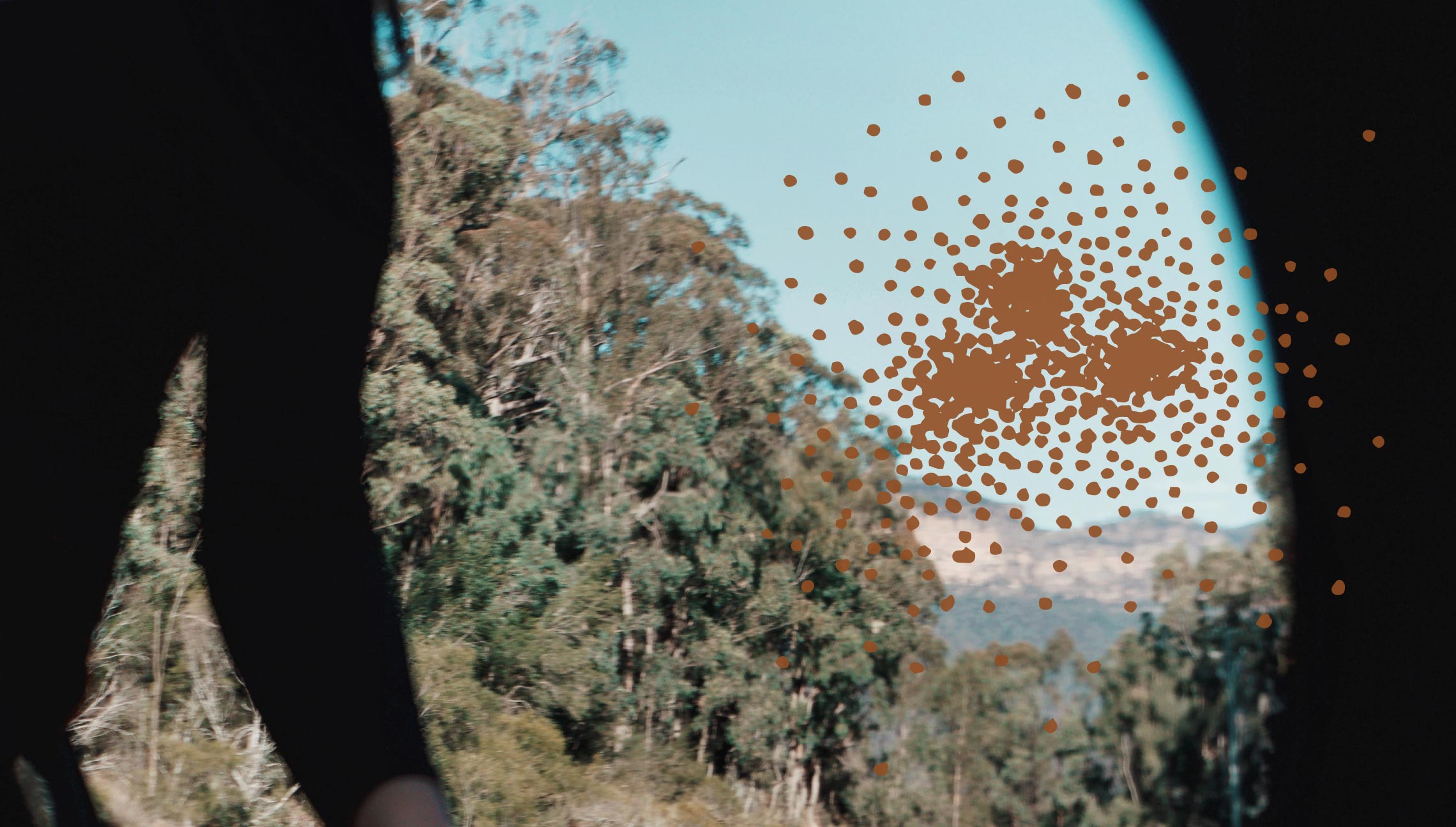Demo Day has come around once more, and thanks to our incredible 2025 Master of Applied Cybernetics student cohort it was full of interesting topics, themes, and creations.
The dominant theme this year was health and wellbeing with student projects making cyber-physical systems of protection, modulation, and intervention a reality.#
Fiona’s Spirit Sentry is a guardian worn on the wrist, designed to protect those most at risk by breaking the silence that surrounds those in custody.
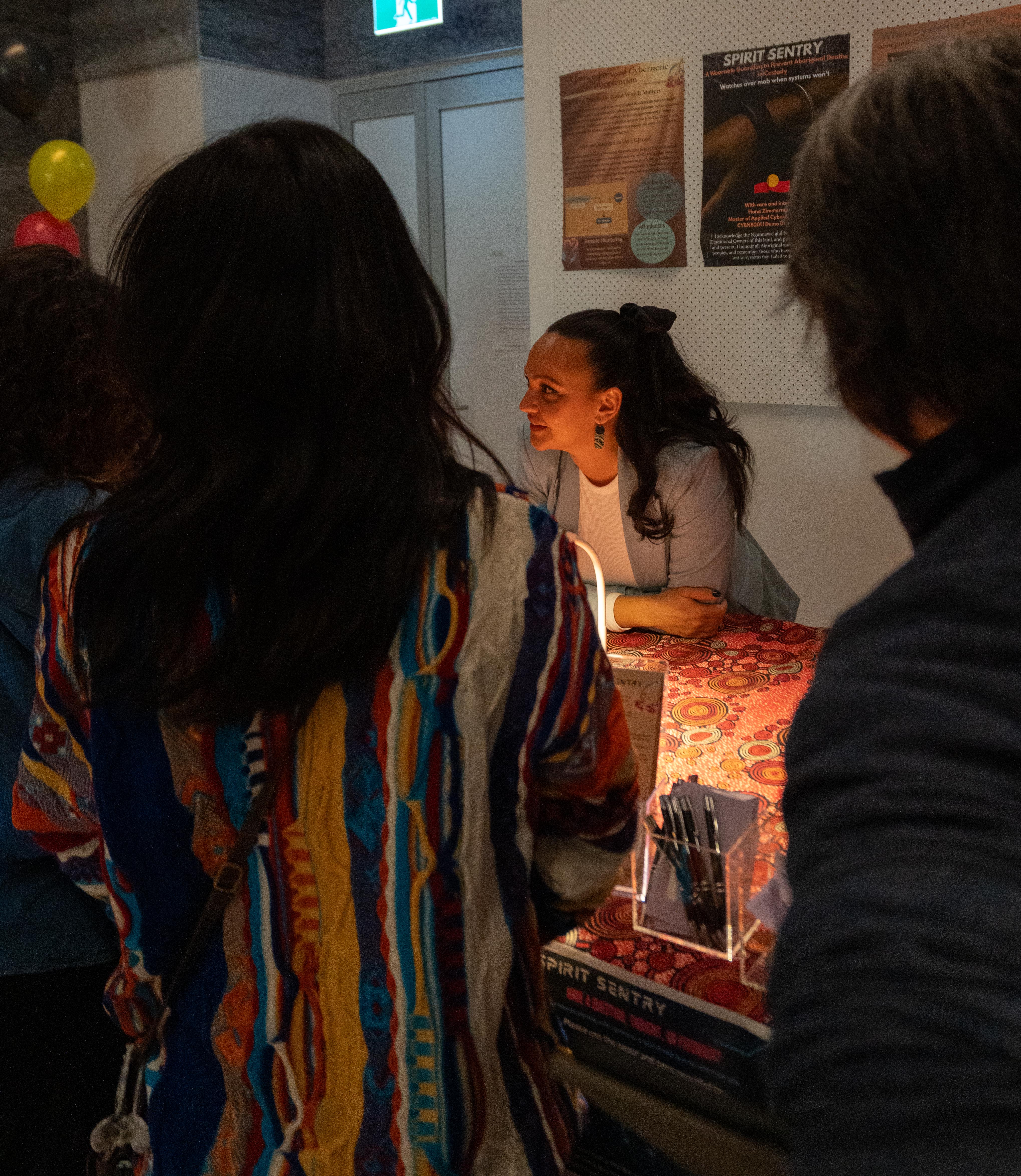
Anthony’s SOMA (Sensor-Operated Mindful Actuation) is a wearable system that allows for real-time anxiety modulation.
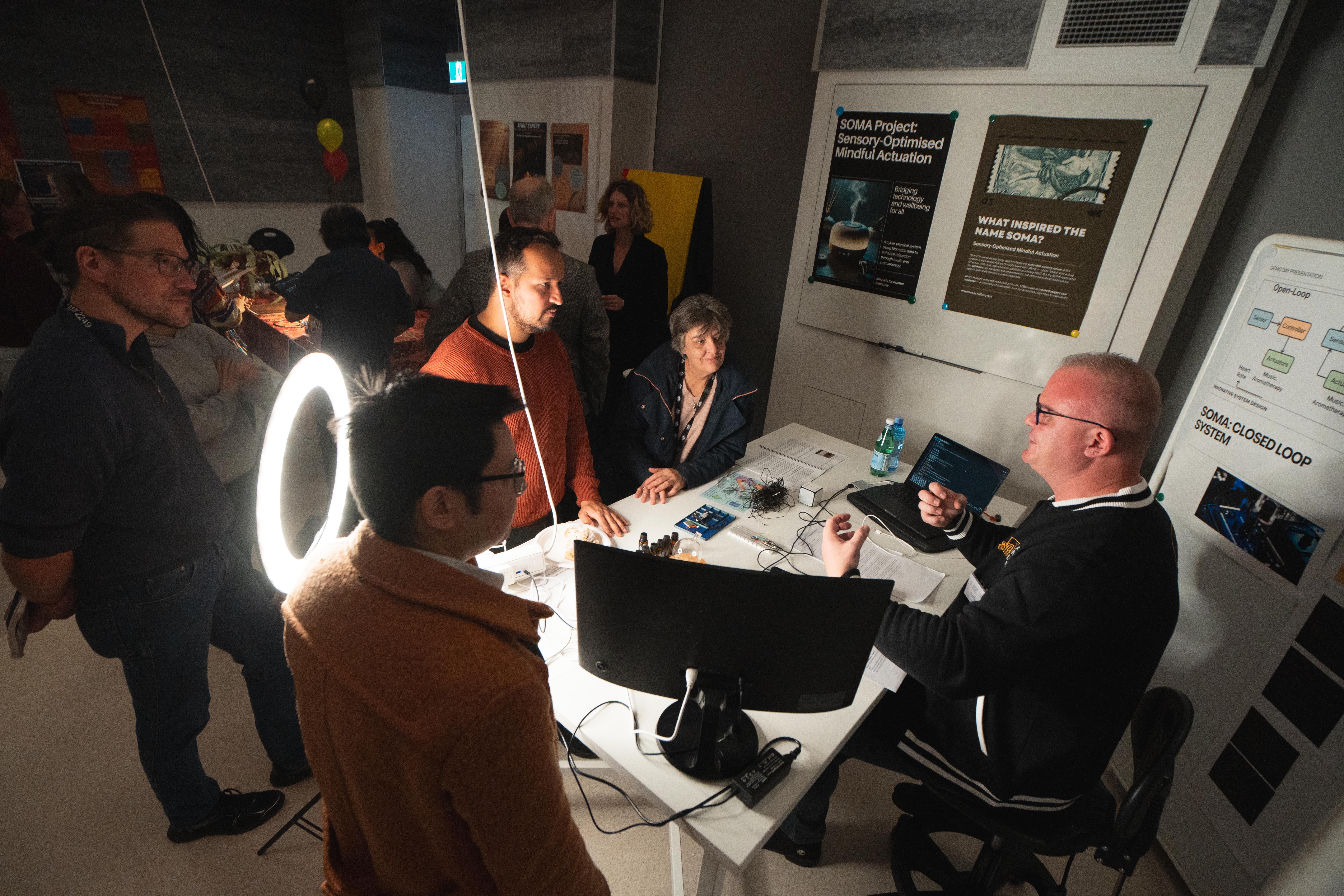
Renee’s Clear Airways was developed with prevention in mind, monitoring and alerting for poor air quality, limiting the growth of mould. Designed to be used in homes as an awareness device letting users know real-time air quality in their homes.

Amber’s Mind Hug pairs a growth-oriented AI agent with a weighted shoulder device that delivers rhythmic, heartbeat-like vibrations that offer comfort during challenging moments, helping to reframe negative thoughts and reconnect the user with their inner agency.
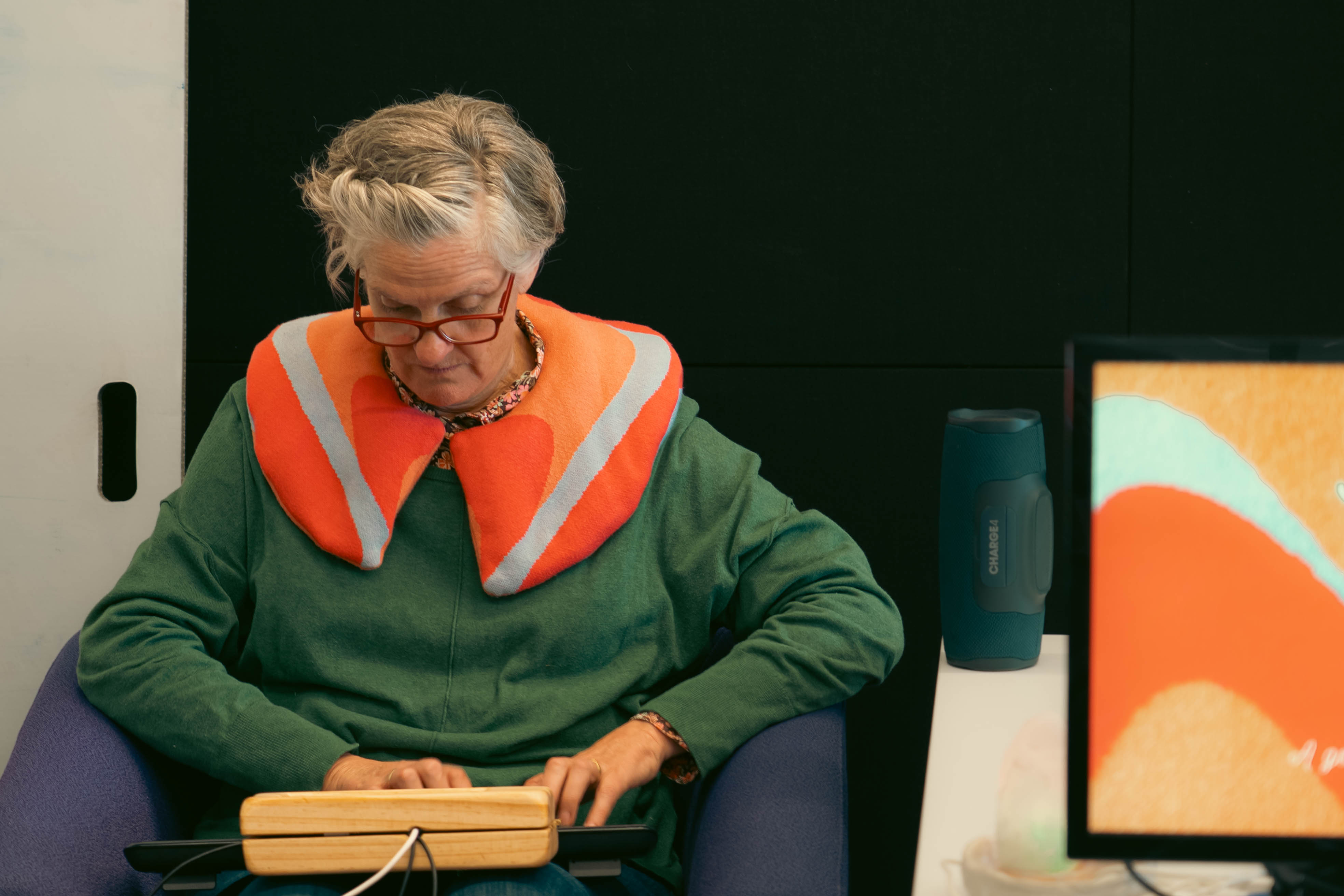
Michael’s SteadySync is a wearable system that helps you track and regulate your breathing rate, allowing you to tune into your inner state and take a body-centred approach to stress regulation.
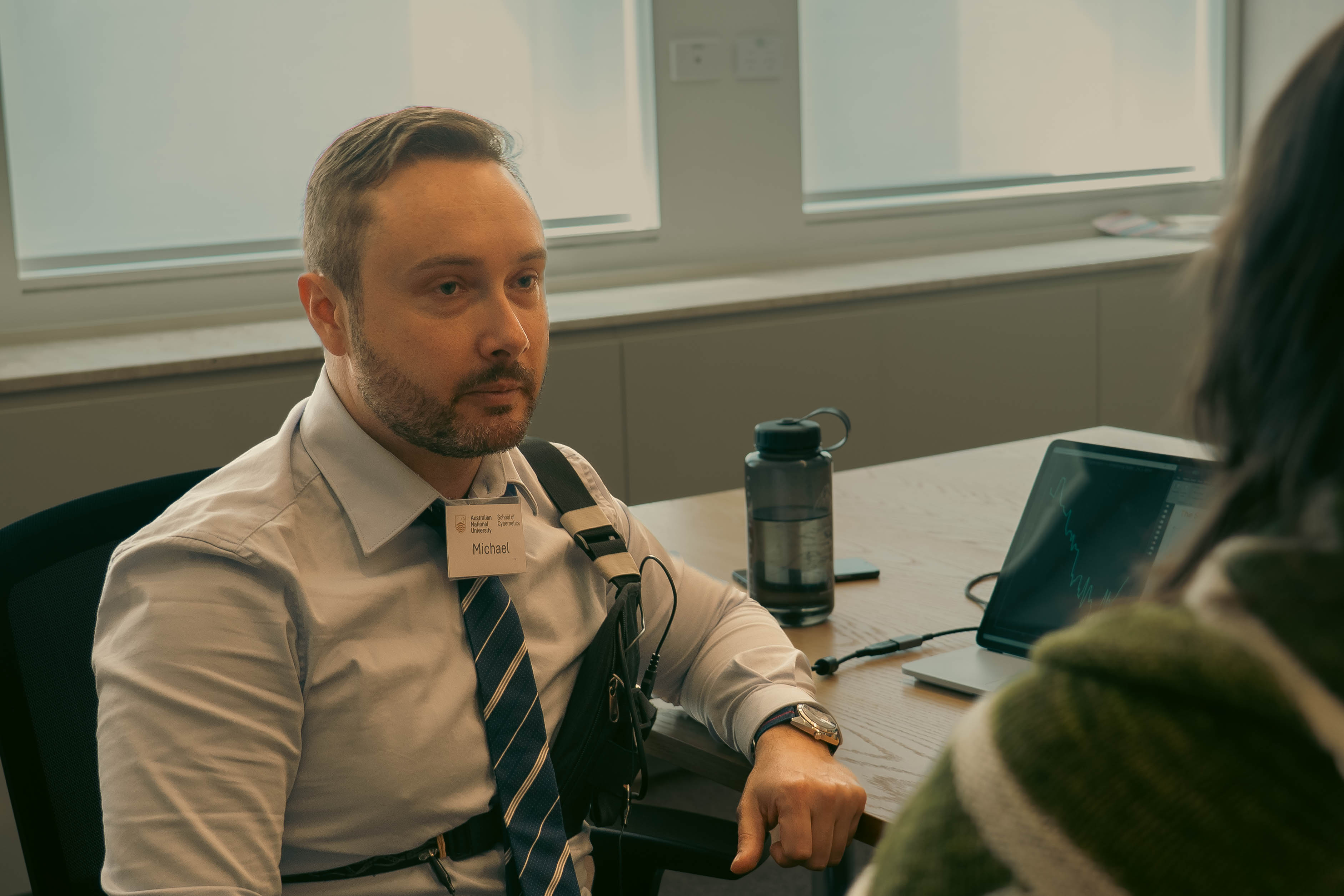
An emerging theme of stories and connection#
Jax’s Memory Stick is a tactile audio-based intergenerational interface designed to hold and share intergenerational stories and ‘provoke’ reflection, dialogue and ethical consideration. The artefact explores the intersection of memory, technology and storytelling, and invites intergenerational exchange through a physical object that resists a disposable consumer culture and encourages people to pay attention and ask questions.

Yue’s Emoji T-shirt is a wearable device that contains a dot matrix LCD display that matches and duplicates your face emotions. Designed to visualize the user’s emotional state through a cartoon-style emoji displayed on the chest and a corresponding distribution of emotional proportions providing users with a delightful and playful way to externalize their emotions, turning internal affective states into engaging visual expressions.
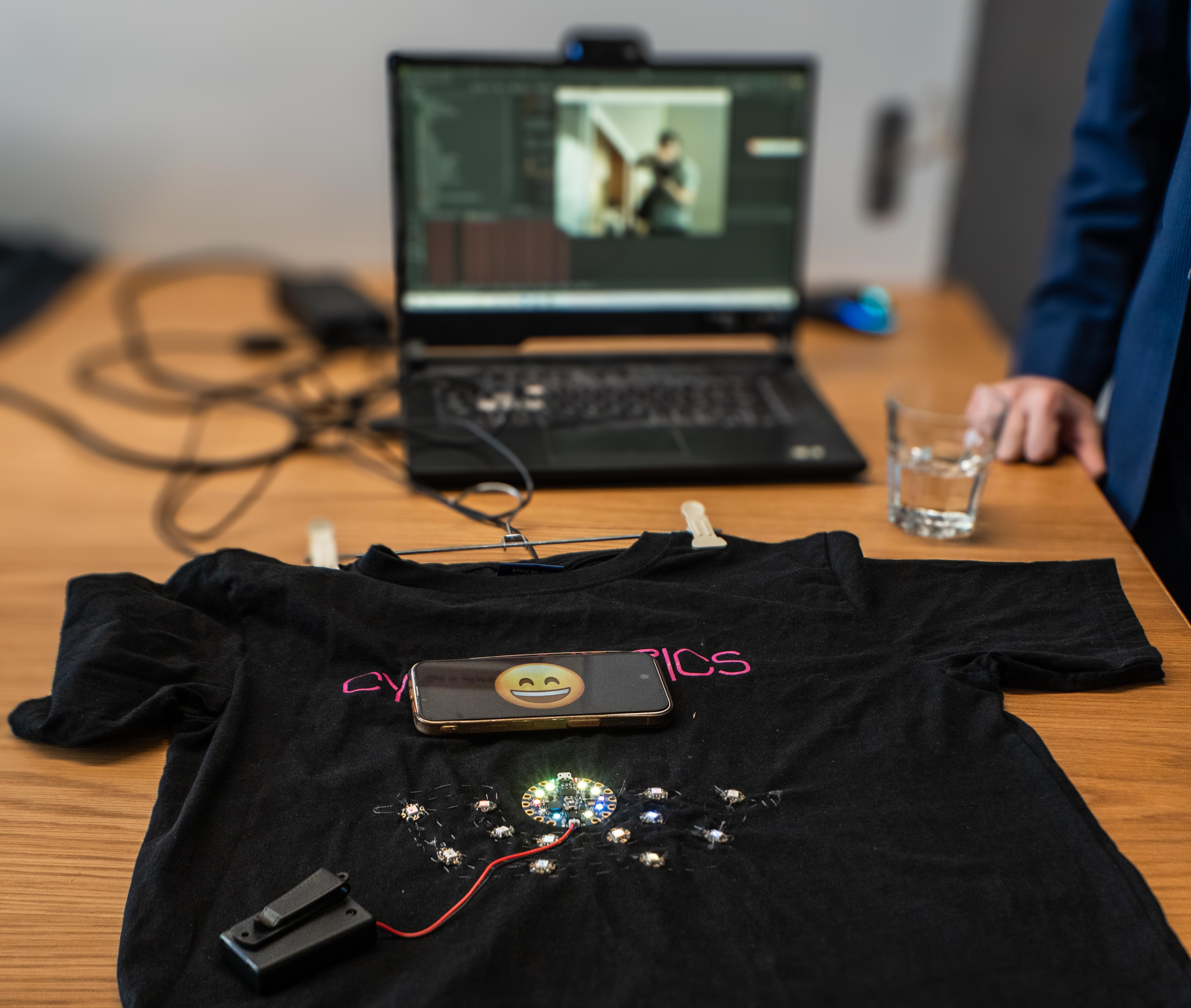
Priya’s Samsara sleep is a system that enhances your memory while you sleep, bridging the gap of consciousness and dreaming. Priya’s prototype explores what remains uniquely human in the age of AI? Perhaps the answer lies not in our computational capabilities but in our capacity to dream, to weave narratives that transcend algorithmic prediction.
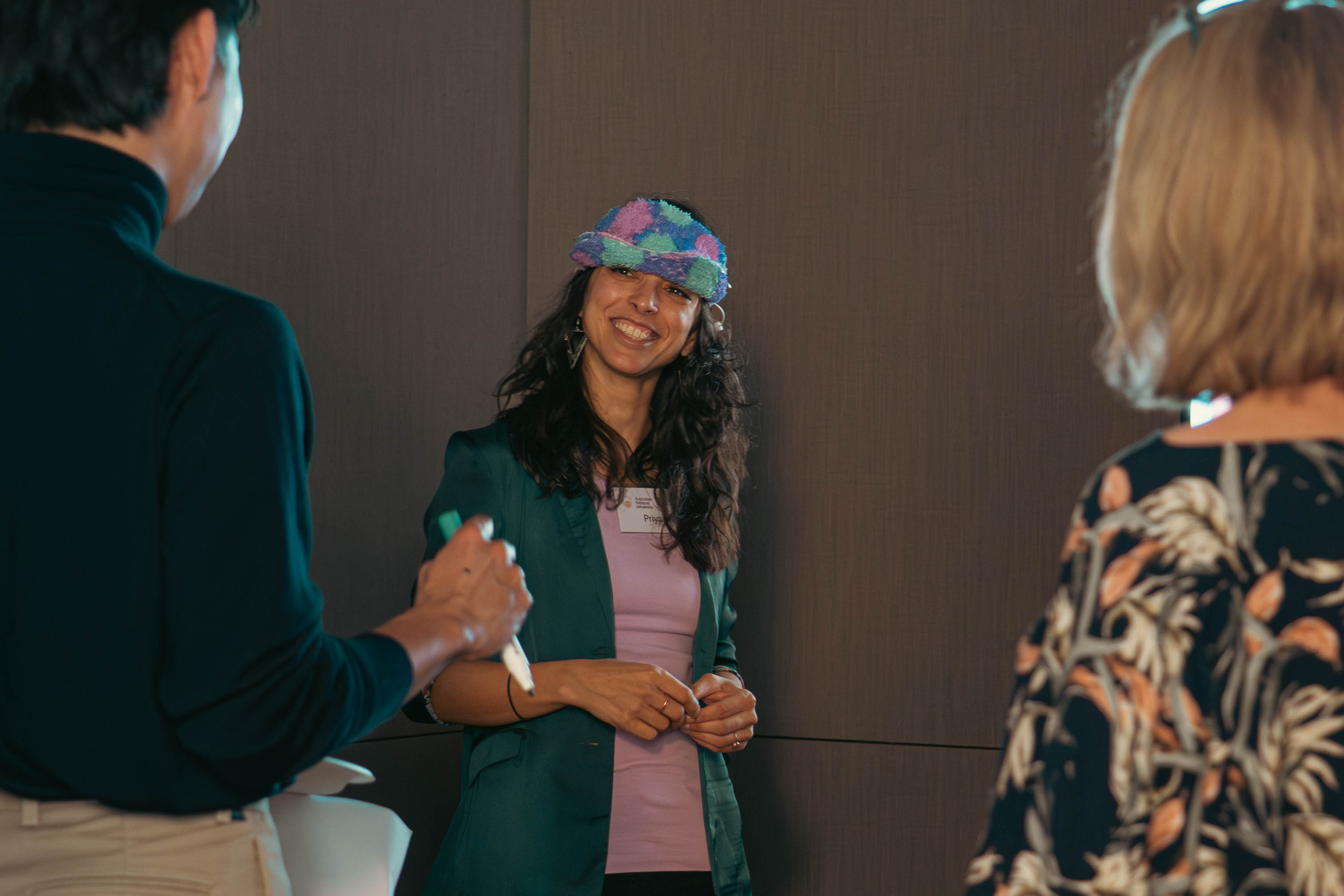
An emerging theme of biomimicry and symbiosis#
Jamie’s Plan(t) senses and makes sense of a location to educate the user on what plant would best flourish in this area, bringing a more intentional approach to indoor planting.

Nathan’s GardenBuddy is an extensible modular monitoring and watering system that provides an automated soil monitoring and watering solution, designed to give plants the care they need. GardenBuddy was developed to support home gardeners with keeping their vegetable plants optimally hydrated. Its goal is to help the forgetful and time-poor grow amazing vegetables at home that can be enjoyed by the household. A secondary purpose is to allow the gardener to see how the garden varies throughout the day and throughout the season.
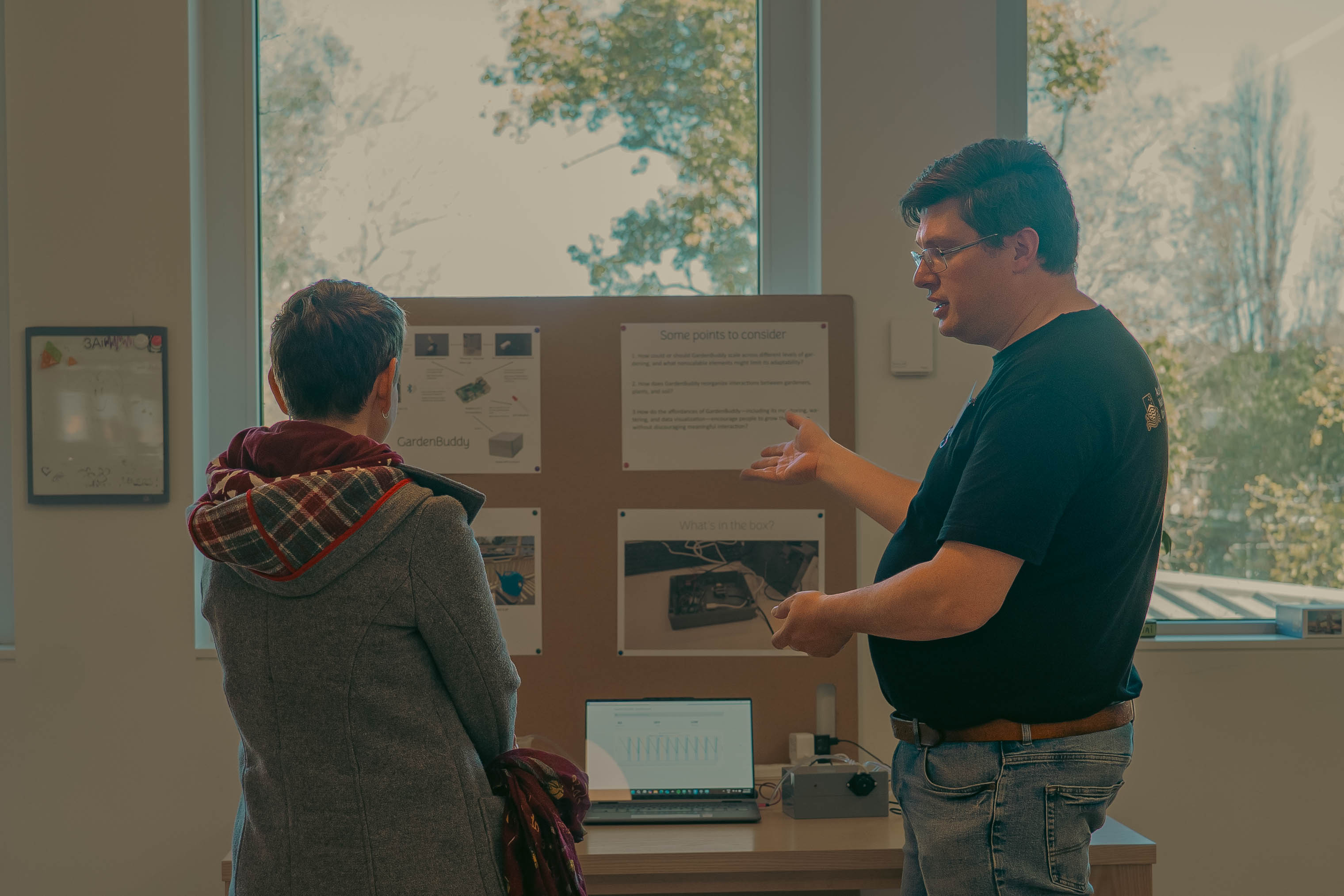
Alisha’s De-extinction art installation was created to explore the topic of de-extinction in an interactive and engaging manner and raise awareness about potential implications of de-extinction.

Uniquely themed projects#
Vas’s PAWS (Pet Analysis Water Sensor) is an early-stage prototype designed to monitor water levels in pet bowls using capacitive sensors and a visual feedback system. Inspired by the cybernetic loop of sensing, actuating, and adapting, PAWS alerts pet owners in real-time about their pet’s water intake, preventing both underhydration and overhydration. This simple yet powerful system bridges the gap between passive care and proactive pet wellness.
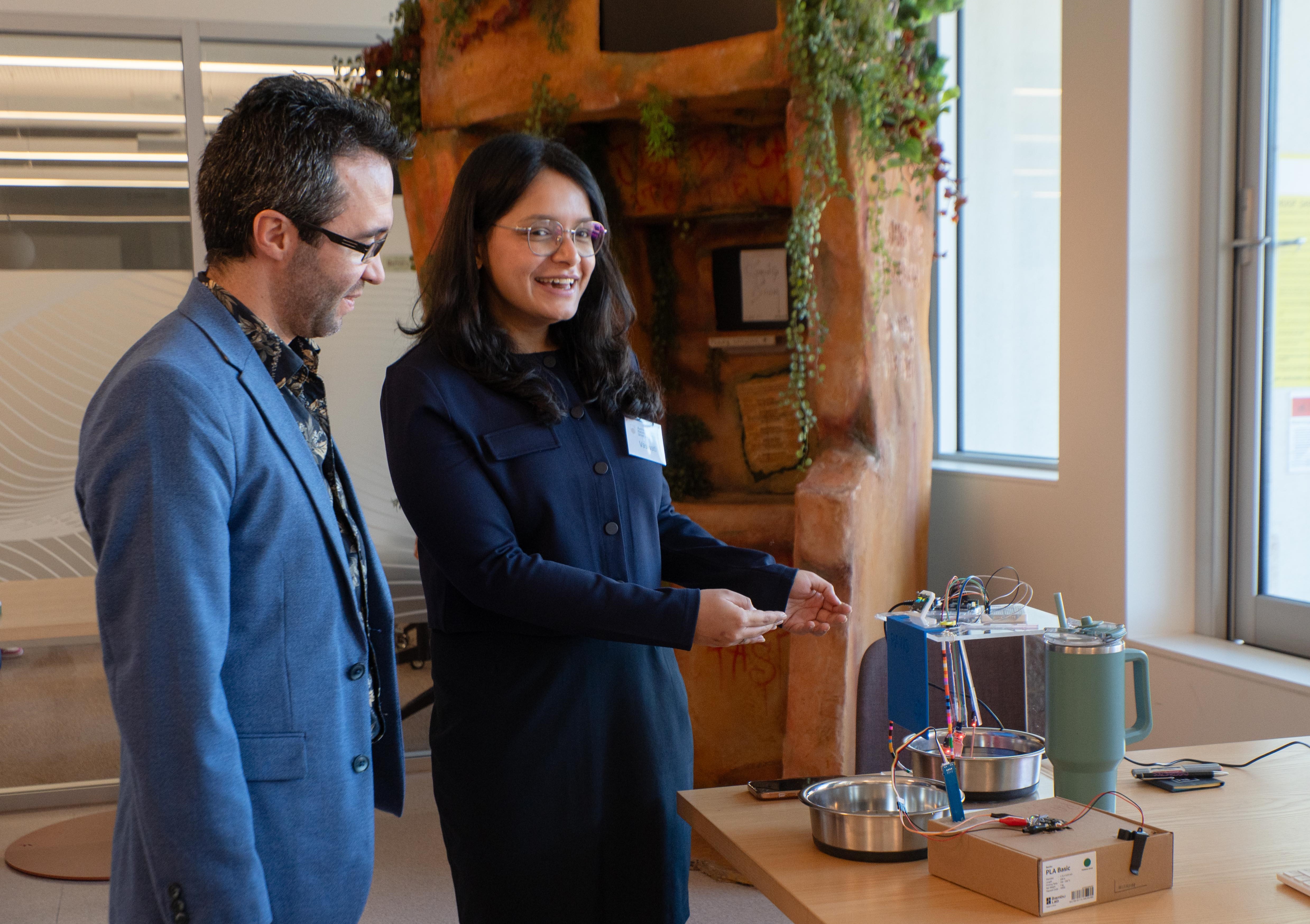
Annie’s PlayHeadLite is a playful interaction with a black box that is full of colour to spark wonder in the everyday by merging her history of creativity and curation with technology.
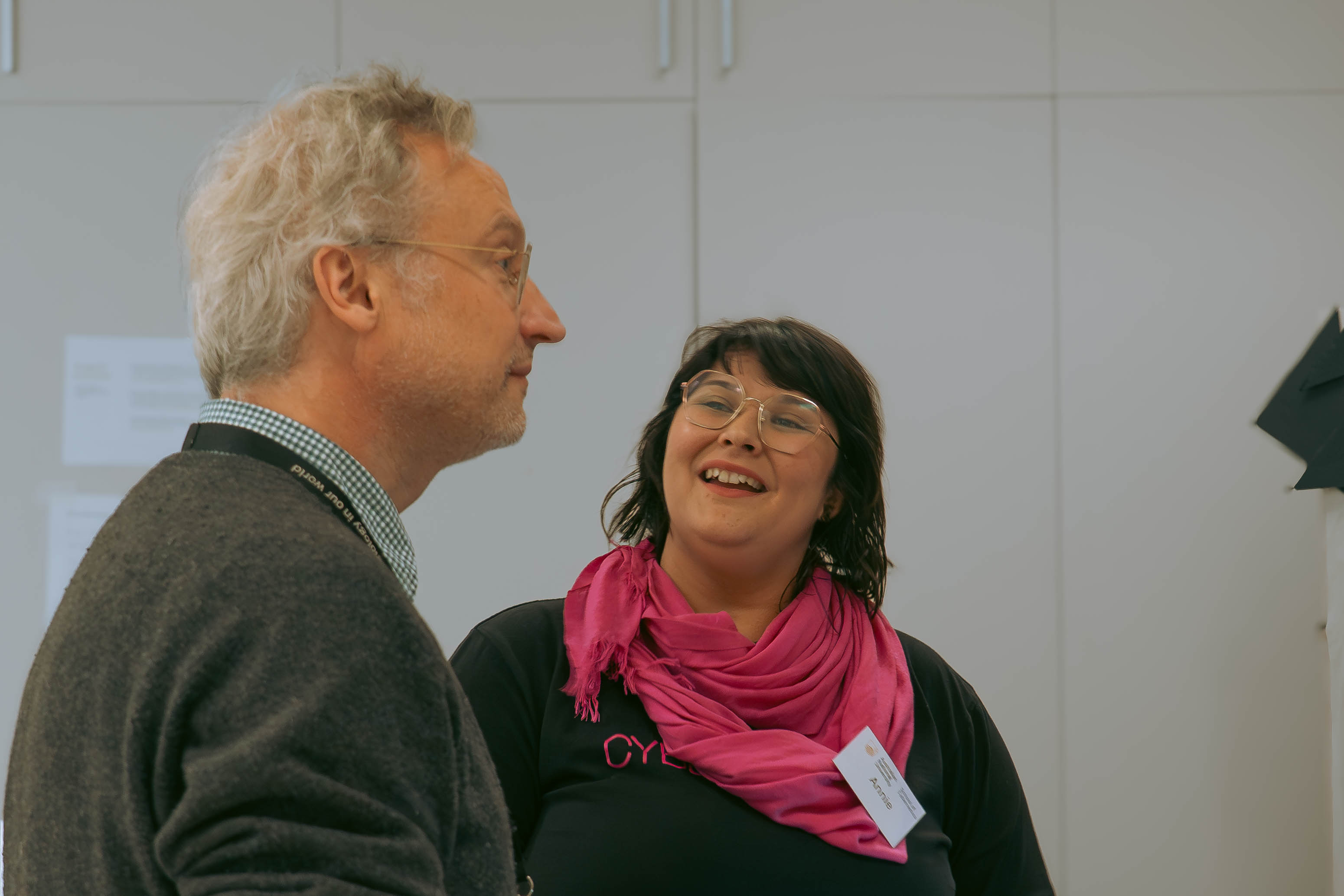
Gabriel’s Orbit is an interactive accompanist for dancing bodies that is designed to encourage creative play and empower personal artistry.

Kevin’s Fog Staff is envisioned as a person portable device to extract potable water from the fog present in the environment through the use of electrostatic forces to enhance the efficiency of fog / water conversion to be collected, with the goal of providing people with a daily ration of water to survive in primarily arid locations or any other environments that have a presence of fog.
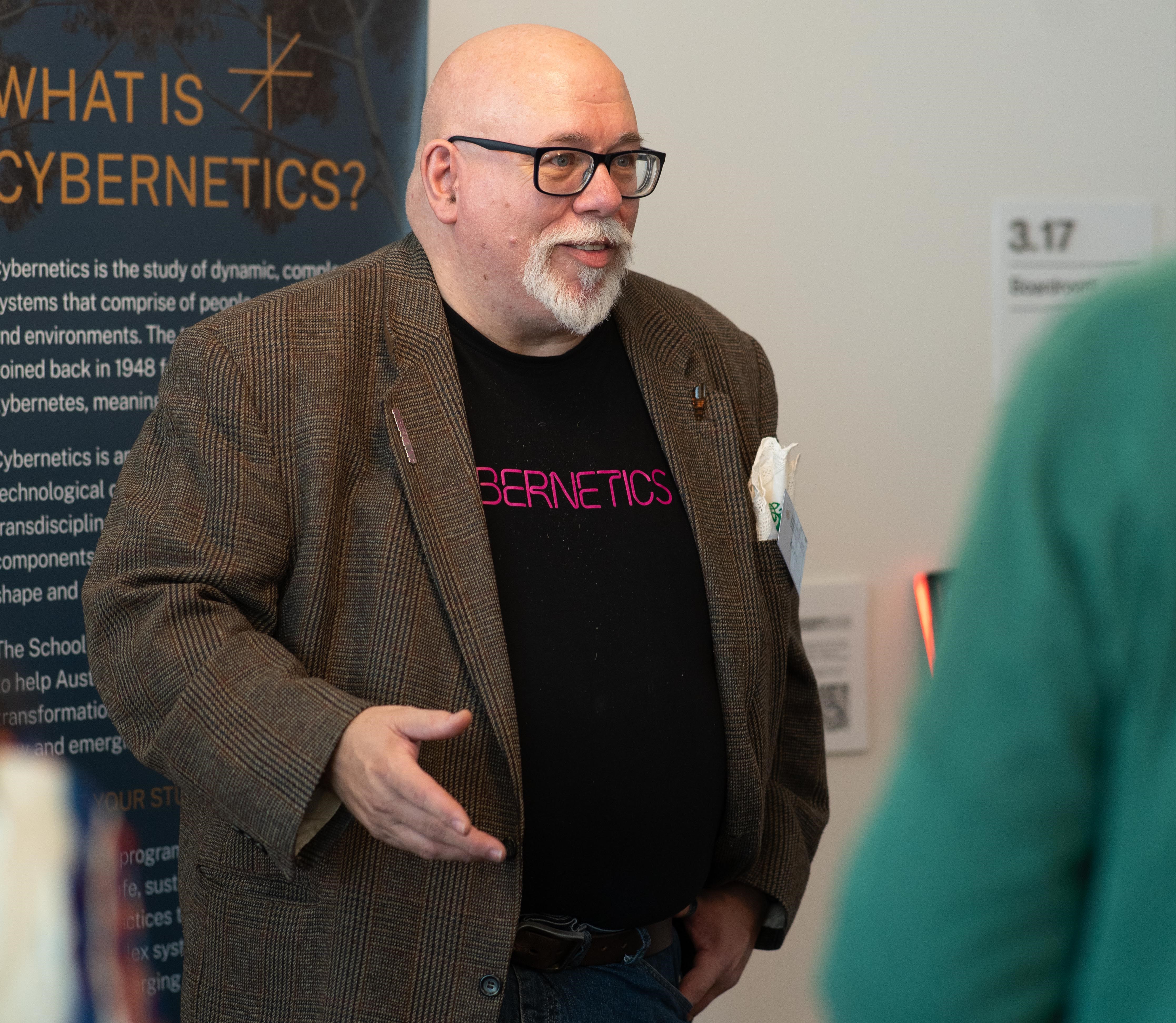
Conclusions we draw from Demo Day#
Through themes of health and wellbeing, stories and connection, biomimicry and symbiosis, and those projects unique in their individual themes, we see emerging ideas and solutions for a better future.
A safer, more sustainable future where technology better integrates to support our lives and environments.
Demo Day is so exciting because of the variety of ways students combine their learnings from the Master of Applied Cybernetics with their previous professional and life experiences. It is also so purposeful; each cohort brings unique ideas to the act of cyberphysical creation, imagining and creating these better futures for us all.

